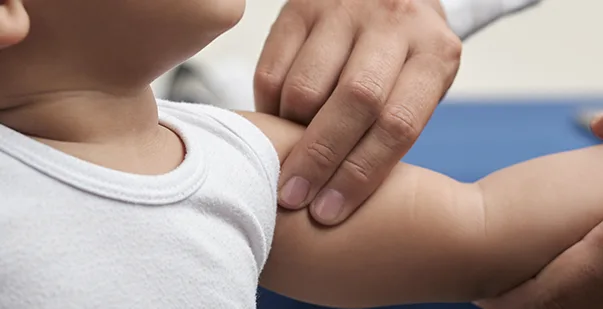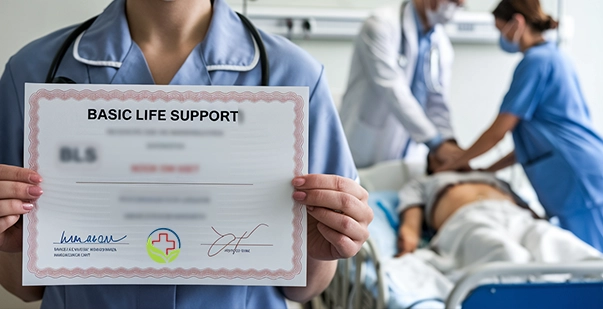When it comes to medical emergencies, each second counts. You will be shocked to know that nearly 45% of out-of-hospital cardiac arrest victims survive when bystander CPR is administered. This is where basic first aid training comes into play. This skill set boosts recovery by enabling individuals to take prompt action. The training covers everything needed to take the first course of action and improve patient outcomes. Keep exploring to learn how basic first aid training can equip you to be a lifesaver in a medical emergency.
What are the key components of basic first-aid training for medical emergencies?
Basic first aid training online is a vast course comprising modules that train individuals with effective skills to respond effectively during a crisis. The training is not just for healthcare experts, but for everybody who wants to save a life. It provides a significant understanding of life-saving procedures and fosters the confidence to swiftly act. Here are the primary components of basic first-aid training:
1. Understanding the ABCs:
As the abbreviation suggests, the ABCs stand for airway, breathing, and circulation. These are the principles of life support that form the basis of emergency response. It teaches you ways to ensure a patient’s airway while assessing their breathing and circulation.
2. Using an automatic external defibrillator (AED):
An AED helps to restart the heart and saves lives during cardiac arrest. The training teaches you how to operate the machine and understand its mechanisms. It teaches pad placement and the administration of shocks in an effective manner.
3. Assess the scene safely:
It is crucial to administer the situation and ensure that you are not much at risk. Training includes learning ways to evaluate the scene, understand the severity of illness or injury, and determine the best course of action.
4. Activate emergency medical services (EMS):
Knowing when to call for professional help is crucial. This involves recognizing health signs and providing accurate details about the patient’s condition.
Read More: First aid courses in Seattle
How does basic first aid training improve survival rates in cardiac arrest cases?
Basic first aid training is significant in improving survival rates in cardiac arrest cases. By equipping individuals with these skills, it helps them respond effectively to emergencies. This helps increase the chances of survival and boosts recovery.
Basic first aid CPR training (cardiopulmonary resuscitation) is crucial, and immediate CPR can boost survival chances. This involves chest compressions and rescue breaths that keep the blood circulating until professional help arrives.
Understanding ways to use an automated external defibrillator (AED) is a crucial part of the training. It has the potential to regulate a heartbeat and restore the cardiac rhythm. Furthermore, bystander CPR and AED can improve survival and boost outcomes.
What role does basic first aid play in activating emergency medical services (EMS)?
Basic first aid is critical in activating emergency medical services and is the first medical treatment provided during emergencies. By acting as the primary link to survival, they initiate the process leading to professional medical intervention. Keep reading to explore how they provide professional medical intervention:
1. Recognize emergencies:
The first aid training course on the basics of health care enables people to identify health emergencies and understand the level of care required. Besides the above-mentioned symptoms, identification of heart attacks, strokes, severe reactions to allergens, and other conditions is also included. Early acknowledgement of this kind of emergency should truly be a goal, because giving EMS personnel time to prepare and act when the possible interventions in these cases can be life-saving is the key.
2. Effective Communication:
EMS instructors teach their students how to call in EMS and communicate with them afterwards. Such information can be very beneficial and specific. They provide details about the patient’s condition, including signs, symptoms, and possibly already-applied first aid measures. This creates the background for a medical support team to get a prompt echo of the emergency and respond with the right assistance until their arrival at the medical center.
3. Initiating the Chain of Survival:
For that famous chain of survival, it’s the set of actions that will increase the chances of survival during cardiac arrest when they are done sequentially. The crucial link in the glorious chain of survival is usually made up of basic first aid, which involves acknowledging the emergency, starting CPR if required, and getting in touch with the EMS. This early intervention may be called forth by the primary responses, which actually facilitate faster professional intervention and eventually contribute to better survival rates.
4. Providing Initial Care:
While waiting for EMS to arrive, of course, those who are trained in first aid to provide basic first aid can provide it to the injured patient. Here is where one could control CPR, stop bleeding, and, in case a person does not wake up, place him or her in a recovery position. Such interventions can help stabilize a patient and prevent further harm; this is why there is a much-needed period of time for EMS to get to the scene.
Read More: What are the Three C’s and the Three P’s of First Aid?
Conclusion
Basic first aid training is valuable in boosting recovery and promoting care. By equipping individuals with the right skills, it ensures safety and swift response. Individuals trained in basic first aid training courses can jump to the rescue and improve patient outcomes in no time. They act as the first line of survival by attending to a cardiac emergency until the arrival of paramedics.










